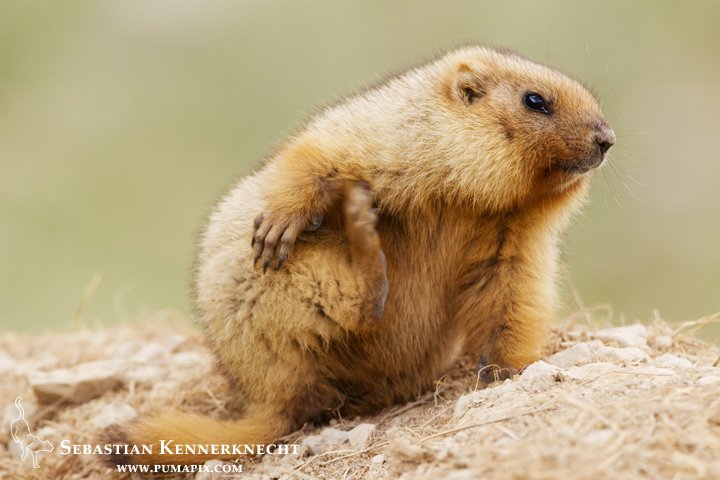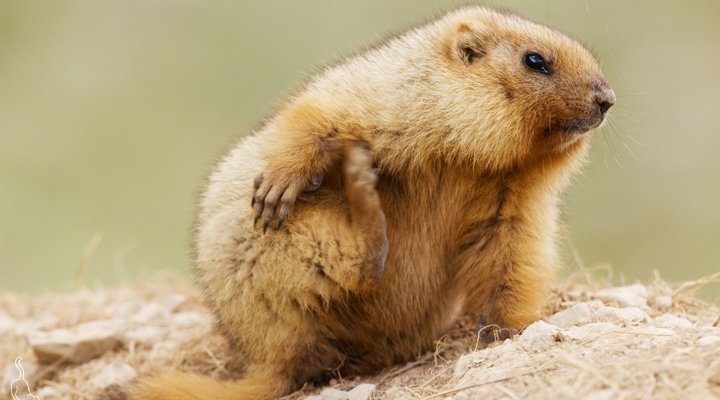
Let’s dive into the world of marmots and explore what’s happening with their populations around the globe. Just like humans face challenges from climate change or habitat loss, marmots are also feeling the heat—literally and figuratively. Understanding their plight can help us figure out what we can do to protect them, so grab your favorite beverage and let’s chat about it!
What Are Marmots and Where Do They Live?
Marmots belong to the squirrel family and are part of the genus *Marmota*. They can be found in various habitats across North America, Europe, and Asia. Picture them enjoying life in grassy meadows, rocky slopes, and alpine regions. They love to dig, which helps create burrows for their homes. These burrows are not just cozy—they serve as safe havens from predators and harsh weather.
The most well-known species, the yellow-bellied marmot, can be found in the Rocky Mountains, while the Alpine marmot roams the high peaks of Europe. Each species adapts to its environment, having unique behaviors and social structures. For instance, some marmots live in groups called colonies, which can be quite social, while others prefer a more solitary life.
Sadly, these habitats are under threat from human activities. As urban development continues to grow and climate change alters landscapes, many marmots are losing their homes. This shift can disrupt their natural behaviors and lead to population declines.
Are Marmots Endangered?
When we talk about marmots, the answer isn’t straightforward. While some species are thriving, others face significant threats that put them on the endangered list. For example, the Olympic marmot, native to the Olympic Peninsula in Washington State, is classified as endangered due to habitat destruction and climate changes affecting its food sources.
To assess whether a species is endangered, scientists look at population trends, threats from predators, and habitat loss. It can be overwhelming, but here’s the thing: by collecting this data, conservationists can identify which species need help and how to protect them.
It’s also good to remember that not all marmots are in dire straits. The yellow-bellied marmot is currently stable, which is a relief. However, it still faces challenges like weather changes and predation. Despite this, they are less threatened than some of their cousins.
The Role of Climate Change
Climate change is a major player in the marmot saga. Just like how rising temperatures can impact our daily lives, they are reshaping the environments where marmots thrive. Changes in temperature affect snowmelt, which in turn alters the availability of food. Marmots rely on plants and grasses to survive, and if these are not available when they wake up from hibernation, their survival is at risk.
The melting of snow and ice also impacts their habitats. As temperatures rise, marmots may have to move to higher altitudes to find suitable living conditions. This migration isn’t always easy; they need to find new burrows and adapt to different food sources. Increased competition for resources from other animals adds to this challenge, making survival a balancing act.
Conservationists emphasize the importance of addressing climate change not just for marmots but for all wildlife. Protecting natural habitats and reducing greenhouse gas emissions can make a huge difference.
Conservation Efforts for Marmots
You might be wondering what’s being done to help marmots. Thankfully, various organizations and governments are stepping up to address the challenges they face. Efforts include habitat restoration, creating wildlife corridors, and conducting research to understand marmot populations better.
Habitat restoration involves planting native vegetation and removing barriers that disrupt marmots’ natural behavior. This can look like rehabilitating areas where development has taken a toll or ensuring that migration paths are clear. Additionally, some groups are working on monitoring marmot populations to see how they’re faring, which can inform future conservation strategies.
Education plays a pivotal role as well. Many programs focus on raising awareness about marmots and their ecosystems. Teaching people about the importance of these charming critters can lead to community involvement and support for conservation efforts.
The Importance of Marmots to Ecosystems
Marmots might seem small, but their impact on ecosystems is quite significant. They are considered a “keystone species,” meaning their presence or absence influences many other species in their environment. For example, when marmots burrow, they aerate the soil, helping plants grow. This, in turn, supports other wildlife.
Moreover, they serve as prey for various predators, like foxes and eagles. Their role in the food chain is crucial, and losing marmots can have ripple effects throughout the ecosystem. It’s like pulling a thread from a sweater; it can unravel the whole thing.
Additionally, marmots can help with nutrient cycling. When they dig, they bring nutrients to the surface, benefiting the plants around them. So, protecting marmots isn’t just about saving a cute animal—it’s about maintaining the health of entire ecosystems.
How You Can Help Marmots
Feeling inspired to make a change? There are several ways you can help marmots and other wildlife. For starters, support conservation organizations that focus on protecting habitats and wildlife. They often rely on donations and volunteers to carry out their missions.
Next, consider spreading awareness. Share what you’ve learned about marmots with friends and family. The more people know about these adorable creatures and their plight, the more likely they are to take action. This can be as simple as sharing social media posts or participating in local conservation events.
Lastly, make environmentally-friendly choices in your daily life. Reducing waste, recycling, and conserving energy can all contribute to the health of our planet. The more we do to combat climate change, the better chance marmots and countless other species have to thrive.
In conclusion, the question of whether marmots are endangered is complex. While some species face serious threats due to habitat loss and climate change, others are doing better. Understanding their importance to ecosystems and the ongoing conservation efforts is key to their survival.
Marmots may be small, but their impact is mighty. By supporting conservation efforts, spreading awareness, and making eco-friendly choices, we can all play a role in protecting these delightful creatures. Let’s work together to ensure that future generations will also get to enjoy watching marmots bask in the sun and scurry about in their natural habitats. After all, a world with marmots is a world filled with a little more joy.

